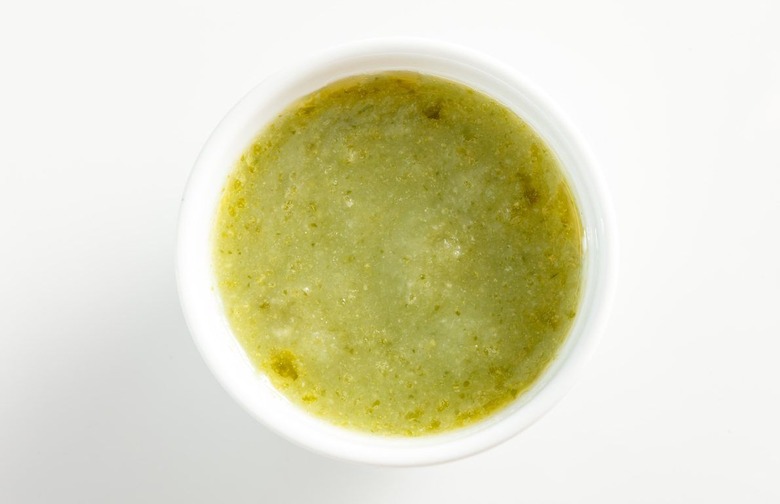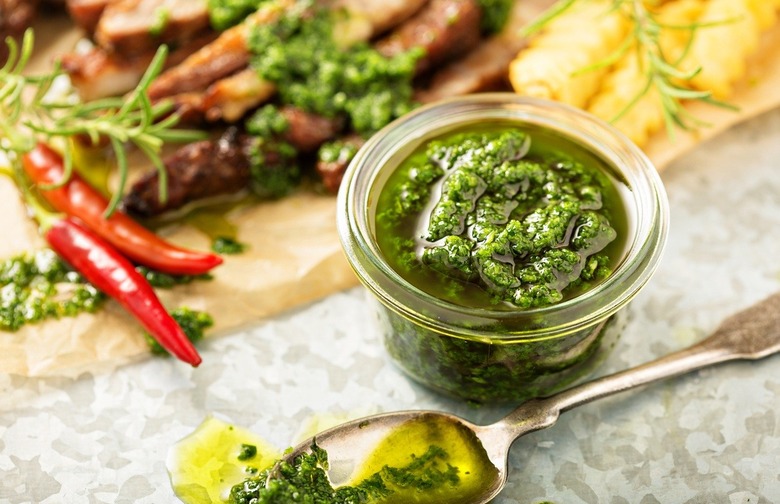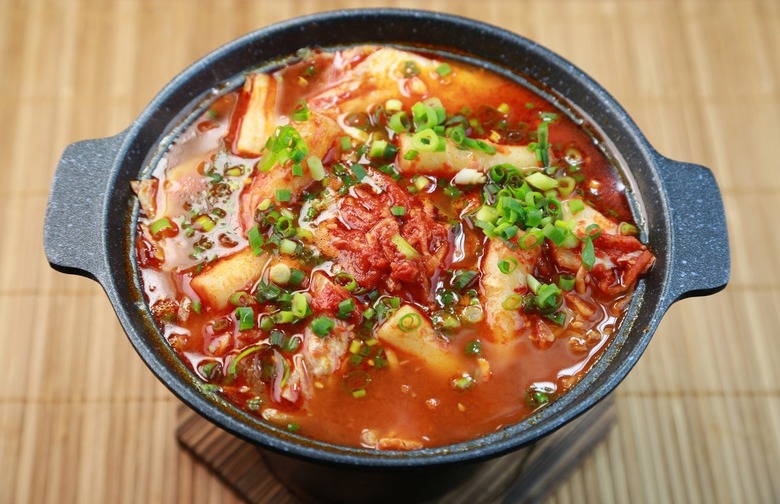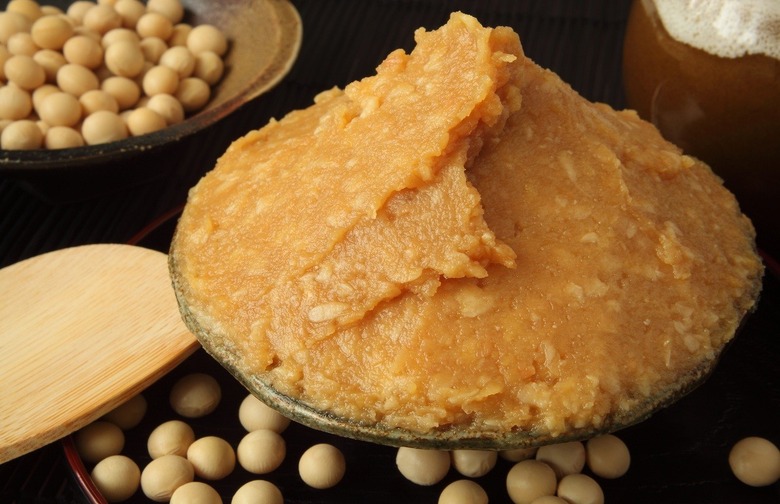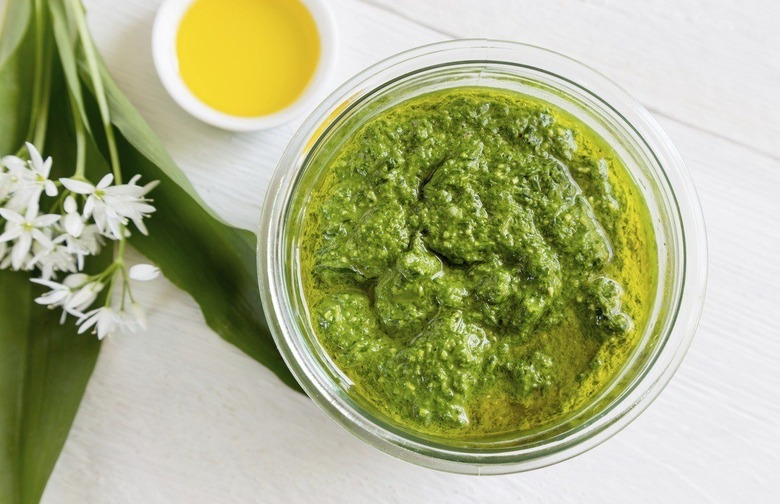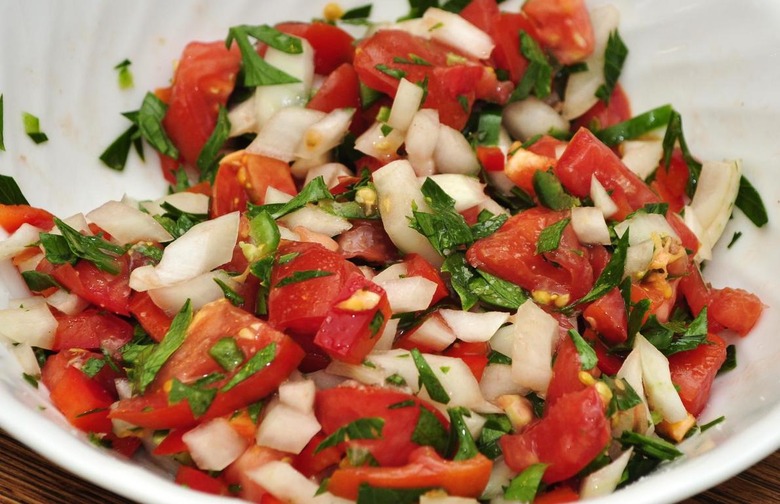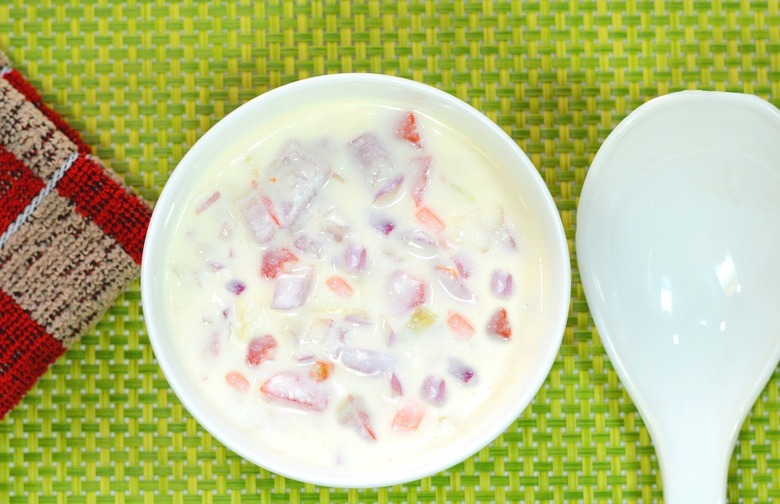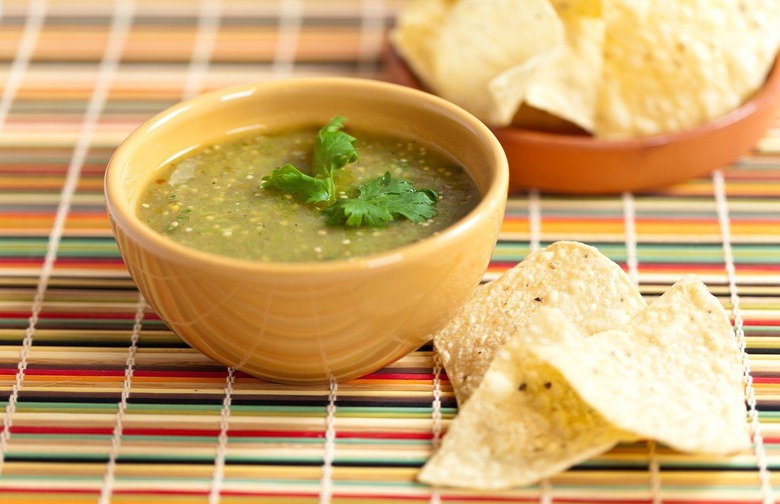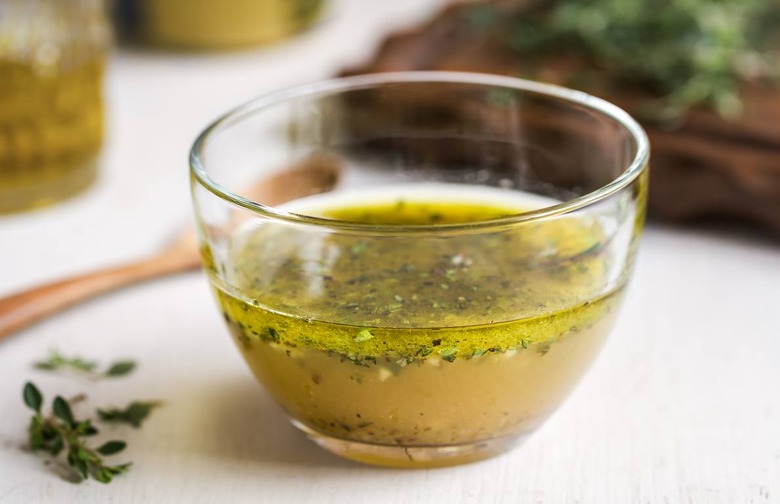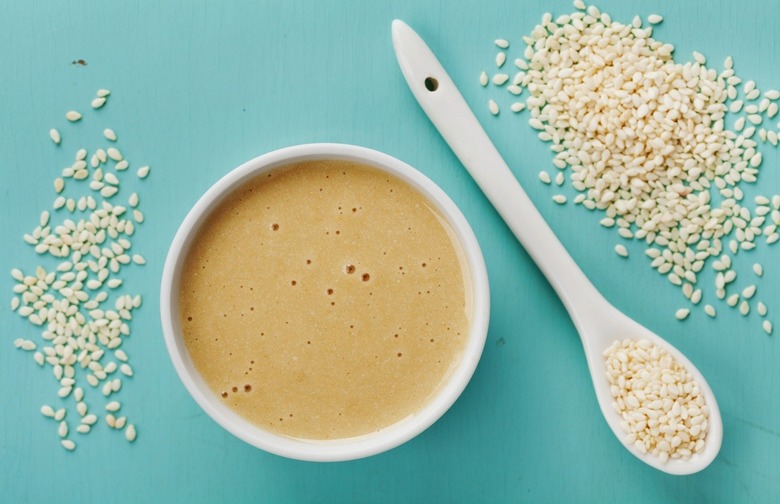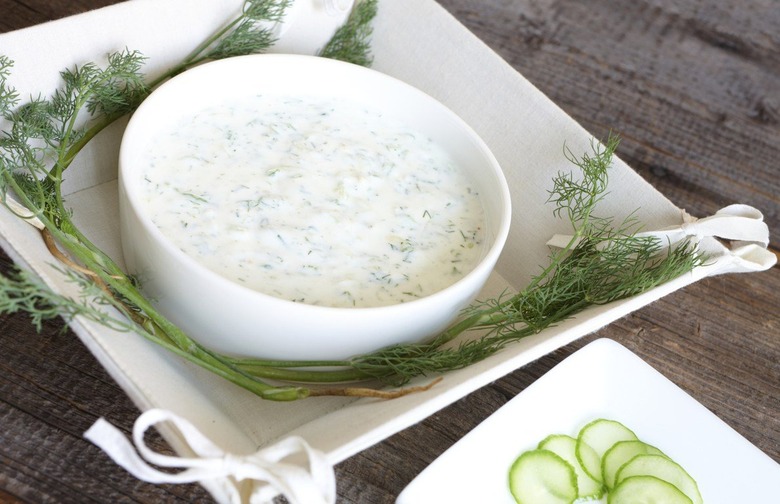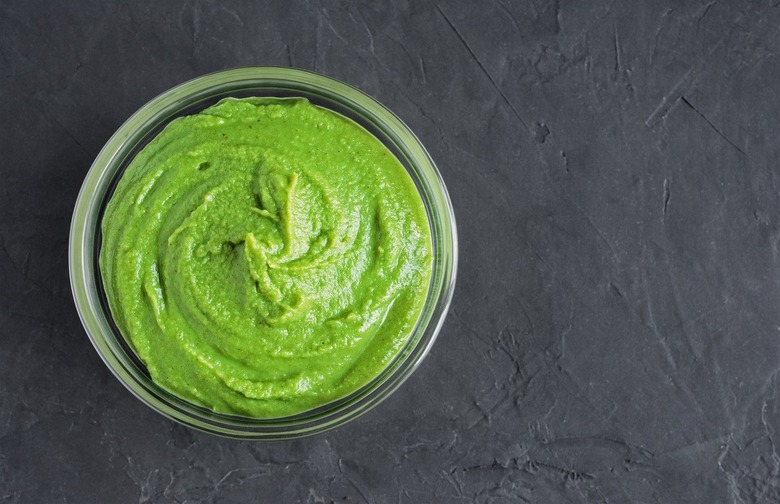12 Sauces And Condiments That Brighten Up The Blandest Health Foods Slideshow
The inherent fattiness of avocado is good for your heart, but it also marries perfectly with the fresh and calming flavor of mint. Though it is a dressing intended for salads, this sauce can morph the flavor of any dish it's added to. Try it on a salad, or spoon some over a cooked piece of fish or chicken.
Chimichurri
A beloved Argentinian and Uruguyan condiment that may have been developed by Basque immigrants to Argentina, chimichurri is now a popular South American accompaniment to steak and other meats. The sauce, made with parsley, minced garlic, olive oil, red pepper flakes, and vinegar, also acts as a salad dressing or a bright addition to vegetable stir-fries (which can in fact be made without a wok). The fresh herbs that make up the foundation of chimichurri sauce make it a low-calorie solution to fixing up bland foods.
Kimchi
Kimchi is a spiced, pickled, and fermented preparation of vegetables, most often cabbage, which is a key component of Korean cuisine. Kimchi is now a global ingredient, praised for its ability to add acidic notes and a crunchy texture to everything from beans and rice to an ordinary sandwich. Kimchi's pop of flavor, which is enhanced by fish sauce, sugar, and ginger, works well with tofu and other soy-based proteins.
You can always buy kimchi in stores, but it's easy and fun to make at home with these five quick kimchi recipes.
Miso
Fermented soybean paste might not sound appealing, but the deep umami flavor of miso can elevate any sauce or dish. Miso ranges in flavor based on its ingredients — which may include barley, rice, and varying quantities of soybeans — and its fermentation time ranges from months to years. Tahini and miso go incredibly well together, but play around by mixing miso paste with unconventional ingredients to unlock the true potential of this complex condiment. Miso pairs well with salmon, chicken, tofu, as well as vegetables like bok choy, broccoli, and string beans.
Click here to try a recipe for roasted vegetables with miso dressing.
Pesto
This herbaceous, garlicky, olive-oil based sauce can be used for way more than just pasta night. Toss sautéed kale, broccoli, or asparagus with a tablespoon or two of pesto to completely transform bland vegetables. Pesto is traditionally made with basil, pine nuts, and Parmigiano Reggiano, but any herb or nut can be used instead.
Pico de Gallo
Pico de gallo is made from coarsely chopped tomatoes, onions, fresh serrano chiles, and cilantro, all marinated in a generous amount of lime juice. Add a spoonful of pico de gallo to grains, beans, fish, or salads to incorporate a burst of citrus and acidity that can really round out a plate of food.
The best part about pico de gallo is that it's easy to make, especially with this heirloom tomato pico de gallo recipe here.
Raita
There's nothing better than topping a spicy dish with a dollop of refreshing raita. This popular Indian condiment is made with a base of yogurt, black mustard seeds, and cumin, but a number of ingredients, including cucumber, chiles, garlic, carrots, or spring onions, can be added. Raita is traditional with Indian dishes, but also adds tang and freshness to anything from couscous and quinoa to braised greens and lentils.
Salsa Verde
Most salsa verde is tomatillo-based (the tomatillo is a small, green, tart fruit that resembles a tomato, though it is botanically unrelated), but many cultures have their own interpretations of green sauce. Italians do a salsa verde with parsley and capers, while the French make a sauce verte with pungent herbs like tarragon and sage. Green sauces offer the perfect herbaceous punch to vegetables, roasted meats, and grains.
Shallot Vinaigrette
Simple shallot vinaigrette is an elegant accompaniment to fresh salads and roasted vegetables. The vinaigrette is lower in calories than mayonnaise or sour-cream-based dressings, and packs more complexity.
While many variations exist, we like this shallot-cilantro vinaigrette recipe.
Tahini
Tahini is made from toasted, ground sesame seeds. The smooth paste has a rich and deep flavor, and is a source of healthy polyunsaturated fats. Tahini is a component in hummus along with chickpeas, but the ingredient is especially versatile. By simply adding water, lemon juice, cumin, and a pinch of salt, tahini paste becomes a wonderfully vibrant sauce for roasted zucchini, eggplant, and bell peppers, and even for simply cooked fish or chicken.
You can also try it as a salad dressing with this quick and easy honey-tahini dressing.
Tzatziki
A classic Mediterranean dip, tzatziki uses a base of creamy, strained Greek yogurt. Cool and refreshing flavors such as cucumber, dill, mint, and lemon juice are mixed in to make this an ideal condiment for grain bowls or as a dip for raw veggies.
Look for it prepackaged in the supermarket, or try making it on your own with this easy tzatziki sauce recipe.
Wasabi
Wasabi is a botanical relative of horseradish and mustard, which explains its pungent, sinus-clearing power. And though most of the green stuff you get served alongside your sushi rolls is most likely horseradish mixed with food coloring (the wasabi plant is rare and costly), it's still an adequate substitute that pairs well with crisp and cool yogurt.
Try this condiment on chicken or on salmon with this grilled salmon and yogurt wasabi recipe.
